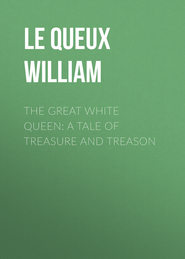По всем вопросам обращайтесь на: info@litportal.ru
(©) 2003-2024.
✖
The Invasion of 1910
Настройки чтения
Размер шрифта
Высота строк
Поля
There she was immediately interned by the French authorities, and when the German Government remonstrated, the French Ministry pointed out that a precisely similar course had been taken by Germany at Kiaochau, during the Far Eastern war, with the Russian battleship Tzarevitch.
* * * * * * *
Very late on Monday night the battleships of the Channel Fleet passed the Lizard, having received orders to proceed up Channel and join the great fleet assembling at Portland. Already there were concentrated at that point eleven battleships of the Devonport and Portsmouth reserve squadrons, seven armoured cruisers, and fifty torpedo vessels of all kinds. At Chatham, where the activity shown had not been what was expected of the British Navy, the Commander-in-Chief had been removed on Monday morning and replaced, and a fresh officer had also been appointed to the command of the reserve squadron.
The policy enjoined on him was, however, a waiting one; the vessels at Chatham, being exposed, if they ventured out, to attack by the whole force of the Germans, were to remain behind the guns of the forts, or such guns as had not been sold off by the War Office and the British Government in the general anxiety to effect retrenchments. The entire naval force was mobilised, though the mobilisation was not as yet quite complete.
On Tuesday night the British Admiralty had available the following ships: —
AT PORTLAND —
Eleven battleships of the Channel Fleet.
Eleven battleships of the Reserve.
Seven armoured cruisers.
Twelve ocean-going destroyers.
Twelve coastal destroyers.
Ten submarines.
Twenty older destroyers.
Ten protected cruisers.
OFF DUNGENESS —
Two armoured cruisers.
Ten submarines.
Four sea-going destroyers.
Ten older destroyers.
Twelve coastal destroyers.
WEST COAST OF IRELAND —
Two large protected cruisers.
MILFORD HAVEN —
Nine armoured cruisers of the Channel Cruiser Squadron.
Eight ocean-going destroyers.
LAND’S END —
One large protected cruiser.
Ten older destroyers.
CAPE WRATH —
Two armoured cruisers.
Ten older destroyers.
Twelve ocean-going destroyers.
And at various points along the south coast twelve coastal destroyers and a dozen old protected cruisers. The Chatham ships were not included in this force, and mustered eight battleships, four armoured cruisers, twelve coastal destroyers, twenty older destroyers, and twenty submarines, besides a number of smaller and older cruisers of doubtful value.
On Tuesday evening the Admiralty ordered the Channel Armoured Cruiser Squadron to put to sea from Milford, proceed north round the coast of Scotland, picking up on its way the two armoured cruisers and torpedo flotilla off Cape Wrath, which had taken up their position at Loch Eriboll, and then to attack the German detachment at Lerwick, and clear the northern entrance to the North Sea. A large number of colliers were to accompany or follow the fleet, which was strictly ordered not to risk an engagement with the main German forces, but to retire if they appeared, falling back on the Irish Sea.
The squadron at 6 p.m. that night, with bunkers full, weighed anchor and proceeded at 18 knots. It passed rapidly up the west coast of Scotland without communicating with the shore, and shortly before midnight on Wednesday joined the Loch Eriboll detachment, which was waiting its arrival, ready to proceed with it. At Loch Eriboll it refilled its bunkers from four colliers that had been sent in advance, and soon after daybreak on Thursday steamed out from that remote Scottish haven for the scene of action, leaving four destroyers to watch the harbour. Two more colliers arrived as it left.
One of the armoured cruisers and eight ocean-going destroyers were instructed to wait till the afternoon, and then move towards the Pentland Firth. Six of the older destroyers were to follow them, and hold the waters of the Firth if the Germans were not in any great force. The other ten armoured cruisers, with four ocean-going destroyers, would make a wide sweep at full speed round the north of the Orkneys, so as to cut off any German vessels in the Pentland Firth. Strict orders were given that if the German battleships or armoured cruisers in any force were encountered a prompt retreat must be beaten, and that until the approach of the British Fleet had been detected by the enemy, wireless signalling was not to be used.
The great expanse of ocean was troubled only by a heavy swell as the ten cruisers passed away from sight of land to the north-east. At 10 a.m. they passed to the north of Westray; at noon they rounded North Ronaldshay. Up to this point not a vessel had been seen, whether foe or friend or neutral. Now they steered south, keeping well out so as to come in upon the Orkneys, where the Germans were believed to have landed men, from the east. They were a little to the south of Fair Island when a large destroyer was seen running away fast to the north.
Two of the four ocean-going destroyers with the cruisers at once started in pursuit, and the armoured cruiser Lincoln followed in support. The rest of the British squadron continued towards the Pentland Skerries, and as it moved, felt the wireless signals of a strange force. Five minutes later a steamer was made out to the south, and, when the British cruisers neared her, was seen to be the Bremen, or one of her class. She fired guns, and stood away to the east.
The Orion at once gave chase to her, while the other eight British cruisers now divided, two making a wide sweep south for Wick, to look for the German cruiser reported off that place, and the remaining six steering for the Pentland Firth, in which, according to local reports, the German torpedo craft were constantly cruising. The Orion was soon lost to view as she went off fast to the east after the German ship.
Three hours after passing North Ronaldshay the six cruisers and their two destroyers drew in towards the Pentland Skerries from the east. The sound of shots from the Firth and from behind Stroma told that the co-operating division of the fleet was already at work. And presently through the Firth came racing, at top speed, two German torpedo boats, with eight British destroyers firing furiously at them, astern of them.
The chase was over in a minute. Finding themselves surrounded and their escape cut off, with the much faster British destroyers astern of them and the Armoured Cruiser Squadron ahead of them, the two German boats turned and ran ashore close under John o’ Groats House, where their crews blew them up and surrendered.
The Firth was cleared, and the co-operating squadron joined hands with the main force. A fresh detachment of two cruisers was sent off to steam direct for Aberdeen, and attack the German cruiser off that place, in case she had not already retired. If she had gone, the two cruisers were to move direct on Lerwick. But the arrival, two hours later, of the two cruisers which had been sent to look after the German ship at Wick, with the news that she had hurriedly left about the time when the Bremen was sighted, no doubt alarmed by the Bremen’s wireless signals, suggested that there was little chance of catching the enemy at Aberdeen.
The seven armoured cruisers and the ten big destroyers now steamed well out into the North Sea, going full speed to get upon the German line of retreat from Lerwick, before moving up along it on the Shetlands. For six hours they kept generally eastwards, and at 10 p.m. were extended over a front of about 100 miles, with six miles’ interval between each cruiser and destroyer. Two of the very fastest turbine destroyers, which could do 30 knots at sea, formed the north-eastern extremity of the line, to the east of the Bressay Bank.
These skilful tactics were rewarded with a measure of success. The wireless signals of the Bremen had alarmed the German squadron at Lerwick, about 1 p.m. on Thursday. Its division of fast cruisers put to sea without a moment’s delay. The older cruisers, Irene and Grief, however, were coaling, and were delayed two hours in getting to sea, while the two gun-boats Eber and Panther had not got steam up, and had to be left to co-operate with the garrison.
Two torpedo boats were also detached for the purpose of assisting the German land force, which had thrown up two batteries and mounted two 5-in. howitzers and two 4-in. guns to protect the mine-fields laid in the entrances to the harbour. The Germans knew every point and feature in the island group, as the British Admiralty had permitted them to use it for their manœuvres in 1904.
Of the German torpedo flotilla, one large destroyer had been cruising off the Orkneys, and had been seen and chased without success by the British Fleet. Two torpedo boats in the Pentland Firth had already been accounted for. Four large destroyers were lying with steam up at Lerwick, and put to sea with the fast German cruisers. Seven other destroyers, boats of 750 tons, were engaged in patrolling the waters eastwards from the Shetlands to the Norway coast, and were speedily warned.
The faster German vessels successfully escaped round the front of the British cordon of cruisers and destroyers. The Irene and Grief were less fortunate. They were sighted soon after 10 p.m., steaming due east, and were easily overtaken and destroyed with little more than a show of resistance. The British vessels which were innermost in the long line were near Lerwick a couple of hours later, and sent in three ocean-going destroyers to watch the port, waiting till daylight before attacking it.
During the night the Orion communicated by wireless signals the news that, after a long chase, she had overtaken and sunk the Bremen, which had made a gallant fight against overwhelming odds. The Lincoln, with her two destroyers, rejoined the fleet, reporting that the German destroyer which they had pursued had got away. A British destroyer was sent south to Fair Island to watch the channel between the Orkneys and Shetlands. Another destroyer was sent off to Loch Eriboll to bring up the rest of the older British destroyers and the colliers to Kirkwall, where the British vessels intended to establish an advanced base. The news of the successes gained was at once communicated to the Admiralty by cipher message.
On Friday at daybreak one of the British ocean-going destroyers steamed into Lerwick under the white flag, with a demand from Rear-Admiral Hunter for the immediate surrender of the place. Failing surrender, the communication informed the German commandant that the British ships would shell the town, and would exact exemplary punishment from the German force. The commander of the destroyer was instructed, if the German commandant showed a bold front, to call upon him to clear the town of civilians and permit the British inhabitants to withdraw.
The British destroyer which took in this communication was not permitted to approach the mine-field. One of the German torpedo boats came out and received the letter. If the demand for the surrender was acceded to the German commandant was instructed to hoist a white flag within twenty minutes.











